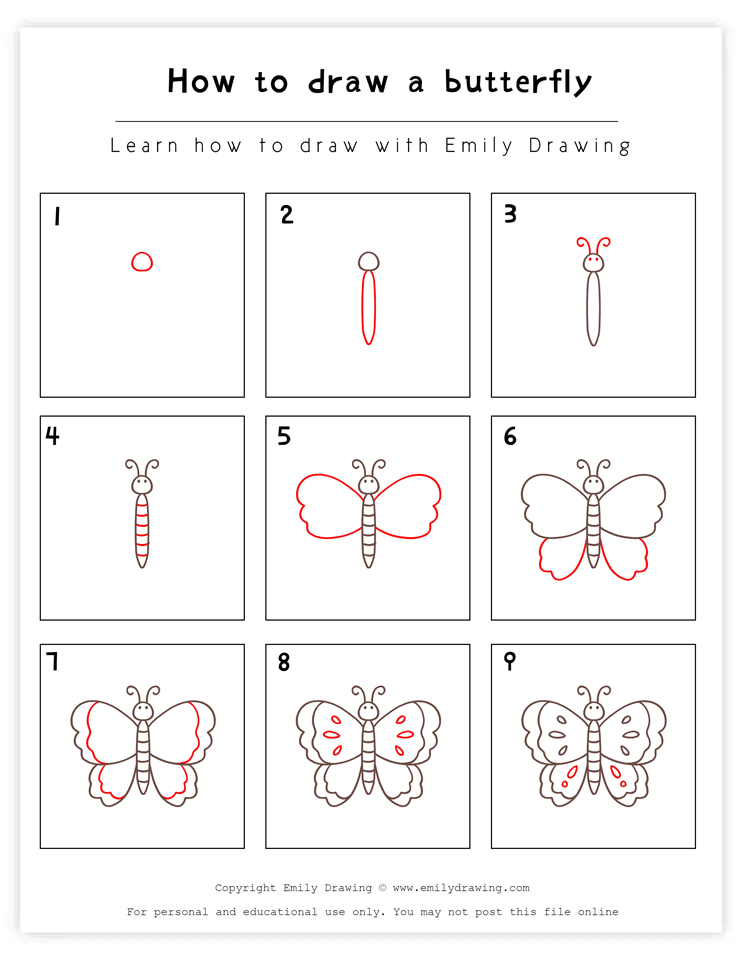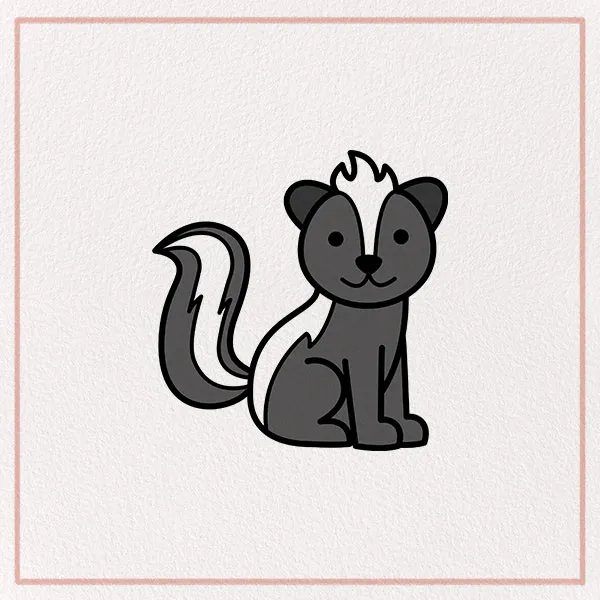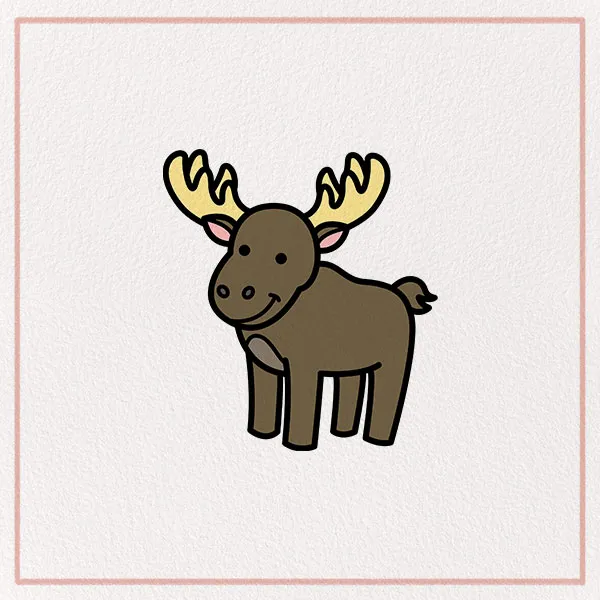Welcome to our easy-to-follow and fun ten-step drawing tutorial on how to draw a butterfly!
Butterflies are beautiful and elegant little insects. If you’ve ever seen them in person, you’ll know how interesting they are—different butterflies have all sorts of unique markings. They start as caterpillars before emerging into beautiful butterflies.
Scientists think that there are about 15,000 species of butterflies!
Monarch butterflies are especially well known, and they make a great subject for monarch butterfly drawing due to their distinct patterns. Every year, monarch butterflies travel a long way— sometimes over 4000 kilometers! Then, females lay eggs and the next generation of monarch butterflies travel the long distance back.
Alright, let’s get started. Find some drawing materials and let’s get started!
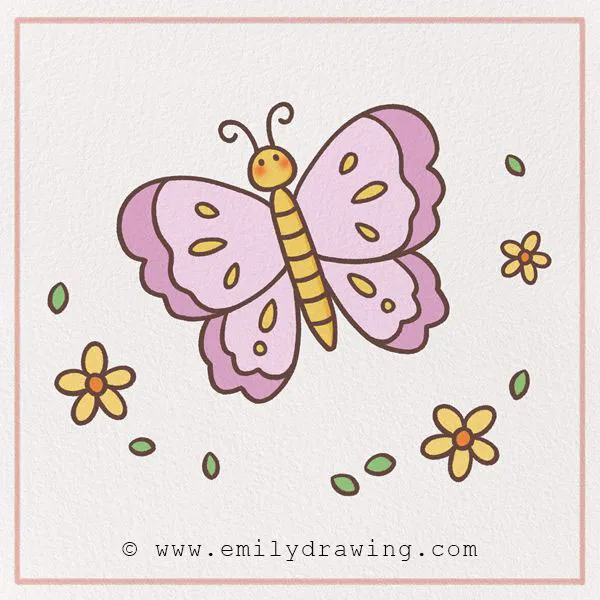
Materials:
- a piece of paper
- a pencil for the guiding lines and sketching
- an eraser
- a black sharpie or a pen for the outlines
- markers or colored pencils for coloring
- our printable drawing guide (Join my Email List below to get this Tutorial)
Here are my RECOMMENDED Art Supplies!
- Crayola Coloring Set (140 Pieces – Mega Value!)
- 24 Colored Crayon Set
- A4 Printer Paper
- Crayola Coloring Pencils
- HP Home Printer with Instant Ink!
Time needed:
14 minutes.
How to Draw a Butterfly — Let’s get started!
Step 1 – Draw the butterfly’s head.
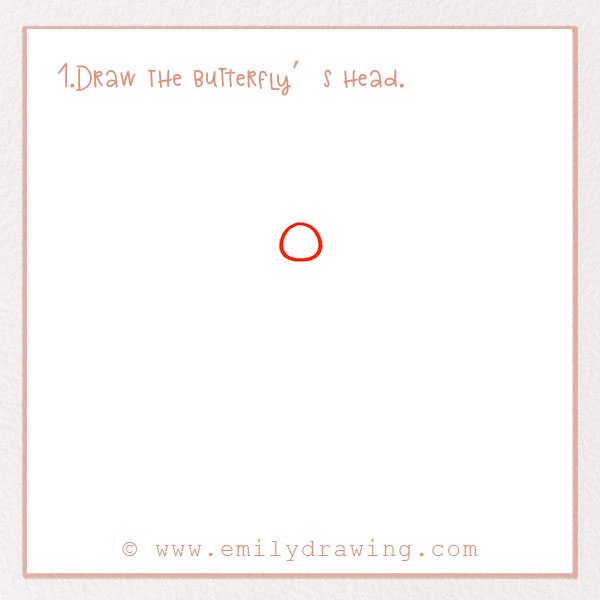
Let’s start to draw the butterfly by starting with the head. Draw a small circle about an inch wide. Place it three-quarters of the way up on the page.
Step 2 – Form the body.
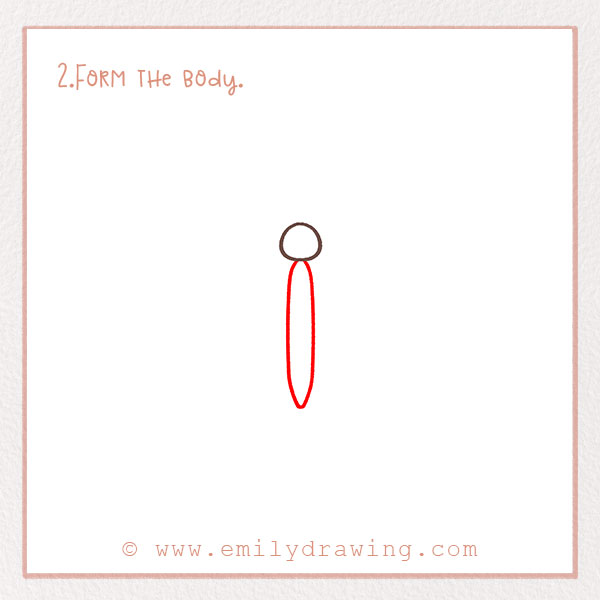
Underneath the head, draw a long skinny oval to represent the butterfly’s abdomen, a key part of butterfly anatomy. This is the body, also called the abdomen when talking about butterflies.
Leave a few inches below the abdomen to finish the drawing. It should be the same width of the head.
Good job!
Step 3 – Draw the face and antennae.
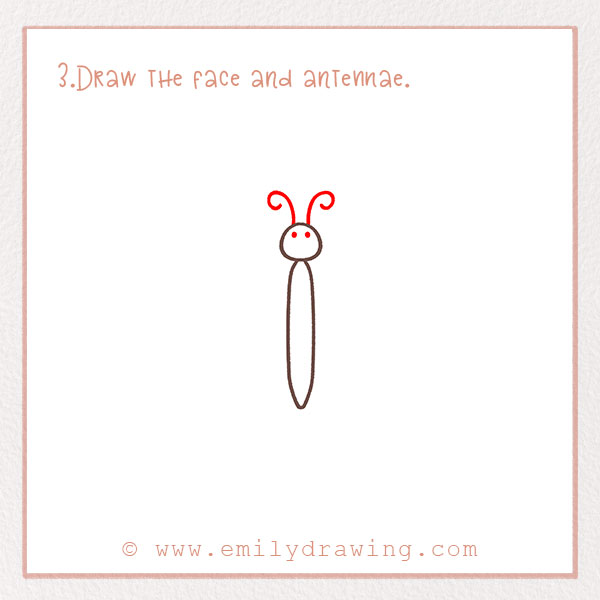
Like many creatures, butterflies have antennae. These are sensory in nature and help a butterfly smell and balance. Let’s add them now!
Draw two curly lines on top of the head. The two curls should face away from each other. Check out the photo!
Also, add two small dots close to the top of the head for the eyes. Did you know that butterflies are especially good at perceiving fast-moving objects?
For more practice with symmetry, consider How to Draw a Star or How to Draw a Snowflake.
Step 4 – Add detail to the body.
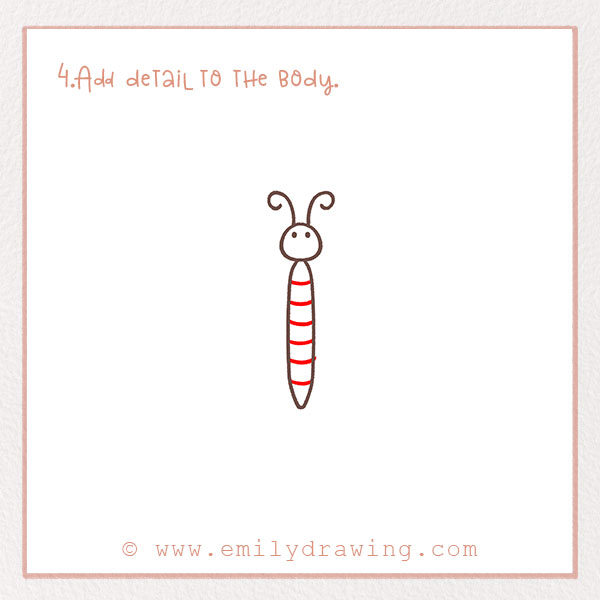
Next, we are going to add some lines to the body. Throughout the abdomen that we drew in Step 2, add a bunch of skinny horizontal lines close together. They should be evenly spaced apart.
Good job!
Step 5 – Start drawing the wings!
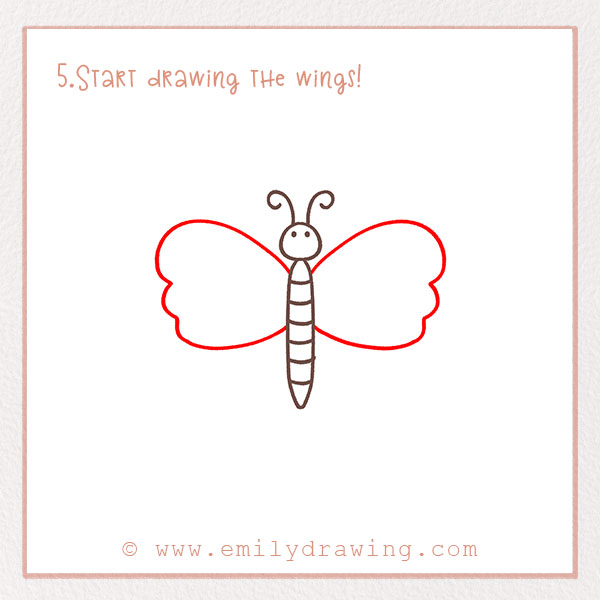
One of the most beautiful parts of butterflies are, of course, their wings. Did you know that butterfly wings are actually transparent? Next time you see one in real life, you might notice sunlight shining through their wings. They also help protect them because they blend in with their surroundings when their wings are folded up.
Just underneath the head on the right side, start drawing a large curved line extending outwards. Continue the curve about an inch from the edge of the page. Bring it back to the abdomen. Check out the photo! The wing should be several inches wide.
Then, do the same exact thing on the left side — this helps with drawing symmetrical wings, just like in real butterflies.
If you enjoy adding intricate patterns, try How to Draw a Snake or How to Draw a Giraffe for similar creative exercises.
Step 6 – Finish the wings.
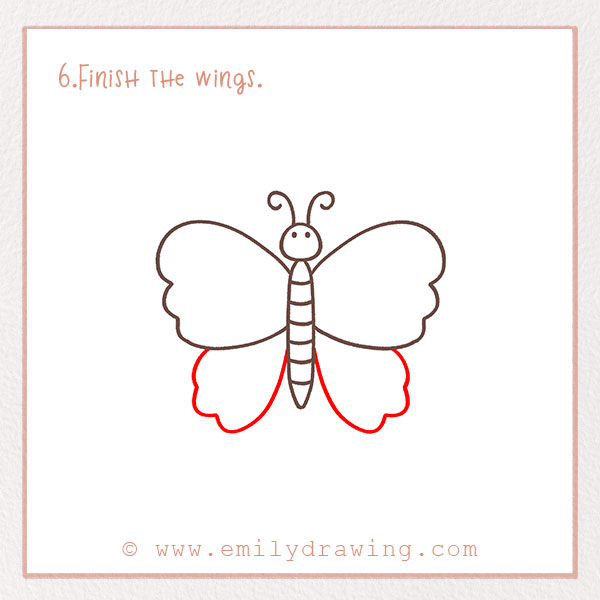
Butterflies actually have four wings! The wings closer to the head are called the forewings and the rear ones are called the hindwings.
So, in this step, we’re going to draw the hindwings. Underneath the wings from the last step, draw more curves that come back to the body. The outline is unique so look at the photo! It has basically incorporated scalloped lines to make a pretty curved line. The hindwings should be a bit smaller than the forewings.
Step 7 – Add detail to the wings!
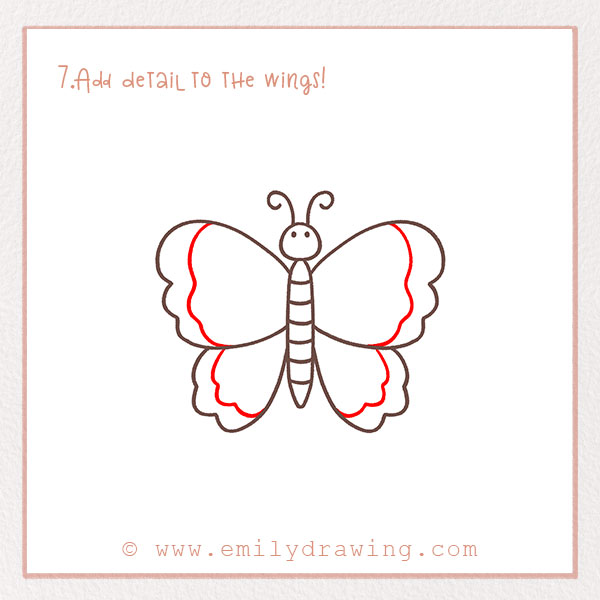
We’re going to add more detail to all four of the wings. Right inside the outer edges, draw similar lines to the outline itself. It should look like the wings have stripes on the sides.
Step 8 – Draw the markings on the wings.
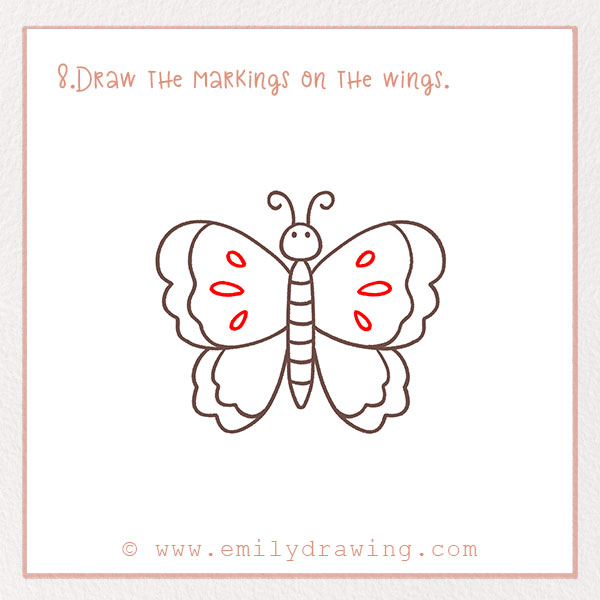
This is a fun step! Butterflies have really beautiful markings that can look very different depending on the species. Scientists think that these markings can help with defensive mechanisms against predators. For example, one theory is that butterflies that have bold spots evolved to appear like the eyes of a bigger animal. Snakes also have unique markings that help them protect themselves.
So, let’s add markings now! Draw three ovals on each of the top wings. Make them slightly different sizes to add some visual variety to your butterfly.
Step 9 – Add some more markings!
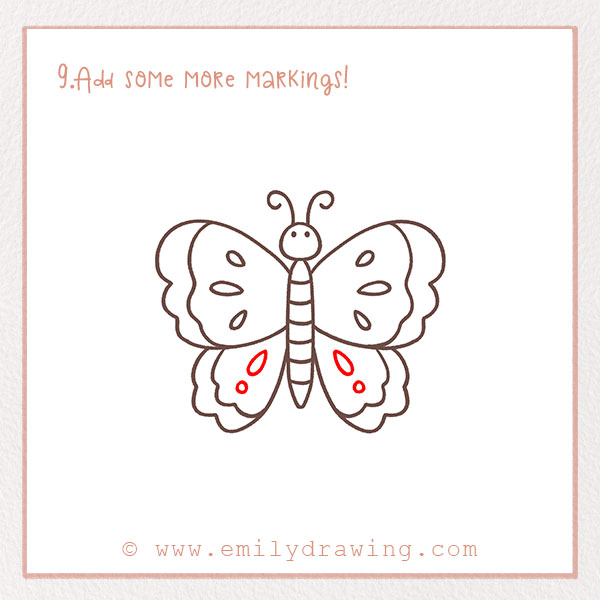
We’re almost done! Draw two small rounded shapes on each bottom wing.
That completes the pretty markings. Good job!
Step 10 – Color in your butterfly!

Now it’s the fun part. Find some colors and fill in the butterfly! Make the butterfly markings a different color than the rest of the wings to make them pop out!
Fill in the background, too!
We hope you absolutely loved this tutorial, learned some drawing techniques, and discovered some interesting facts about butterflies. If you liked this art tutorial, you might enjoy the ladybug and caterpillar ones we also have on here!
Share this drawing tutorial with friends who you think might enjoy this! You can tell them about it in person or you can also digitally share this tutorial with the social icons on this page.
If you enjoy drawing delicate and beautiful creatures, you might also like How to Draw a Ladybug or How to Draw a Bird.
Pin it now, Draw later!
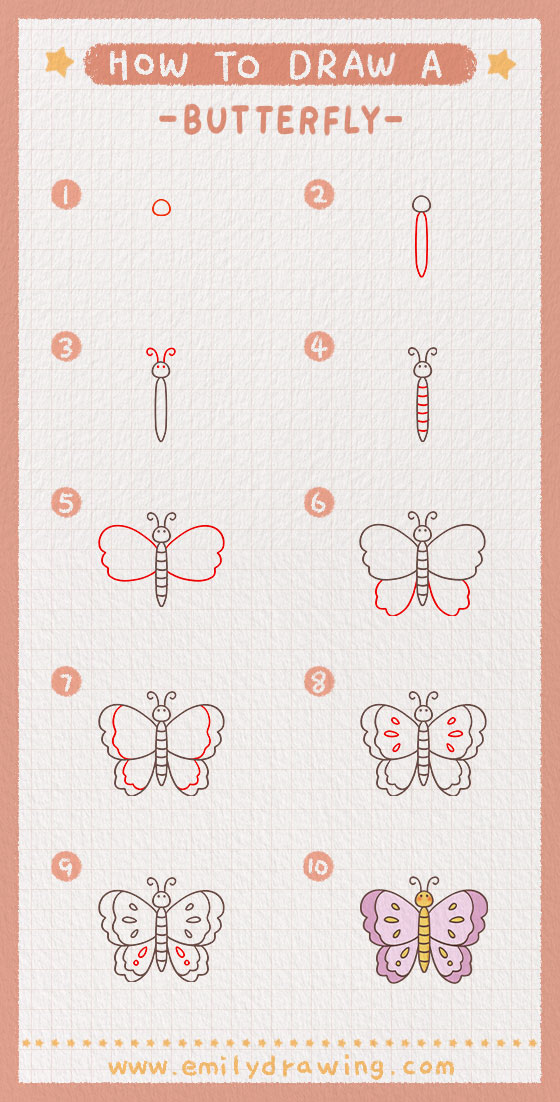
Get the FREE Printable Drawing Guide
